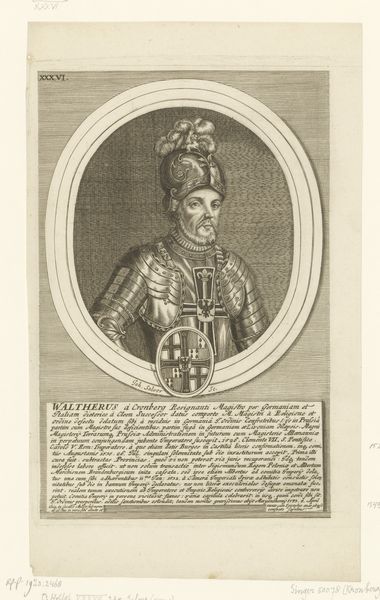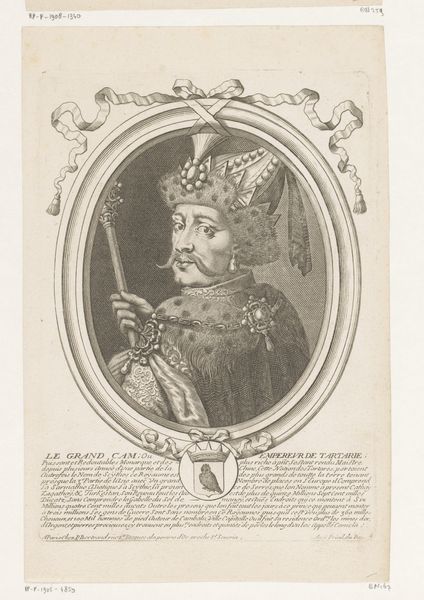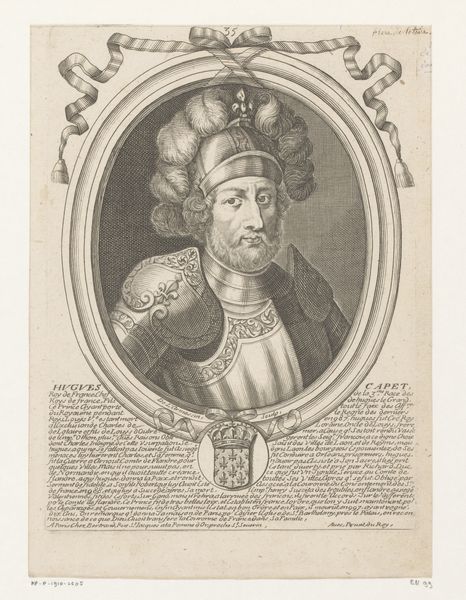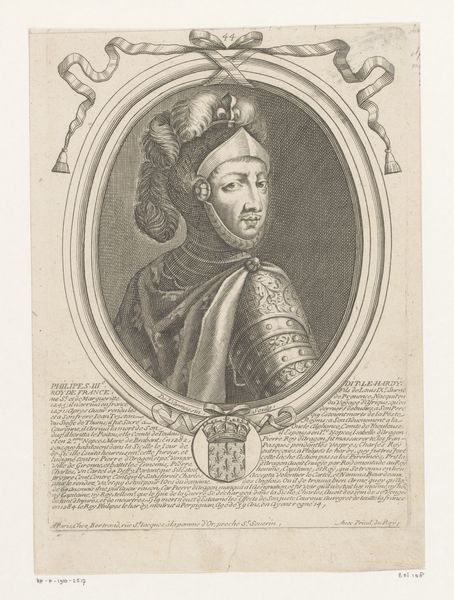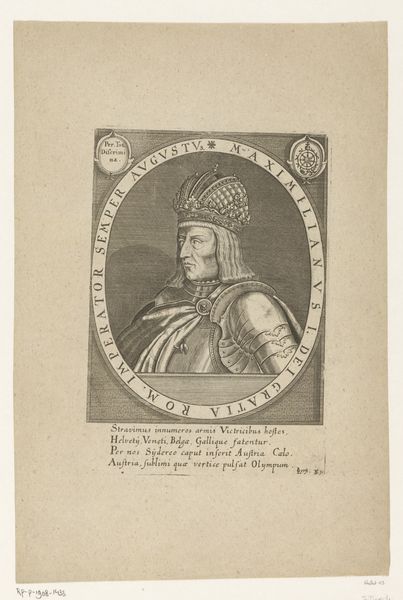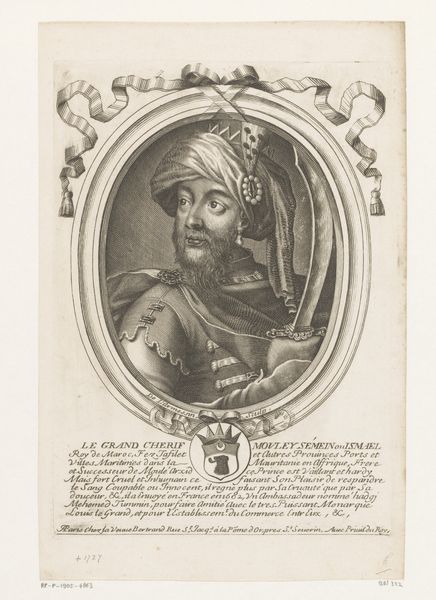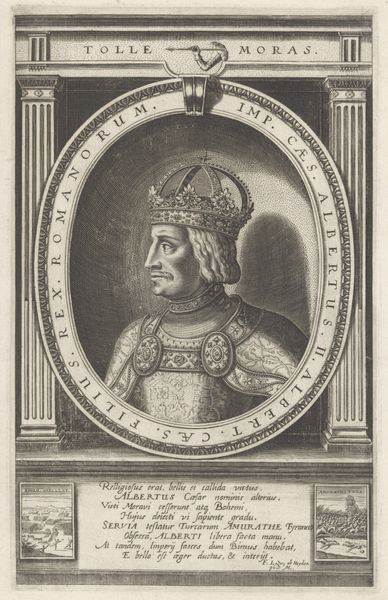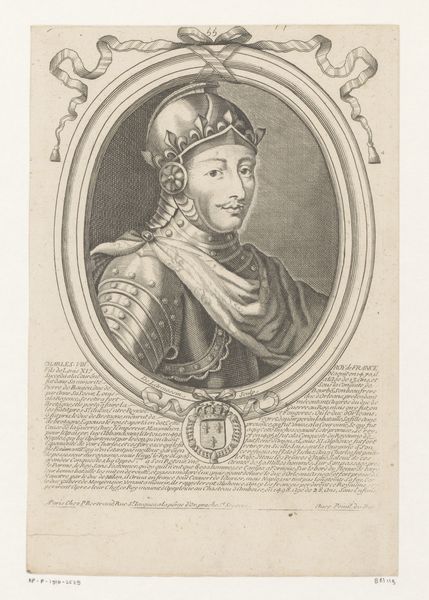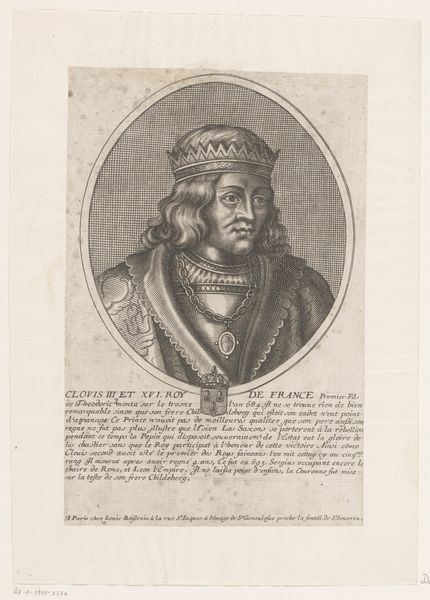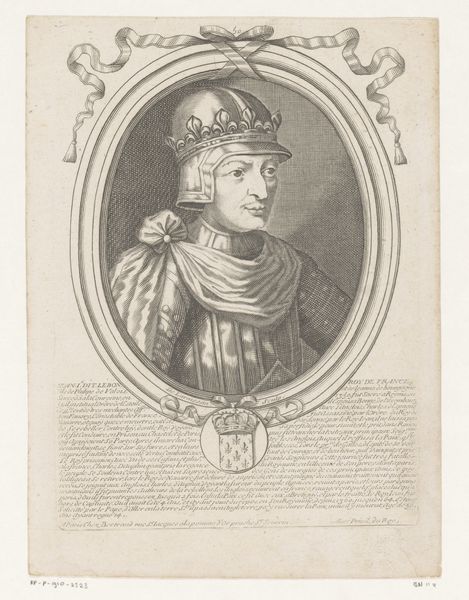
engraving
#
portrait
#
baroque
#
old engraving style
#
islamic-art
#
history-painting
#
engraving
Dimensions: height 232 mm, width 159 mm
Copyright: Rijks Museum: Open Domain
Nicolas de Larmessin I created this engraving of Idalcanzi, King of Golconda, using etching techniques. The portrait is framed by a decorative oval, with a ribbon at the top and an emblem at the bottom, filled with dense text. Notice Idalcanzi’s elaborate turban and jeweled attire, signs of status. Headgear, like crowns, has signified power across cultures and throughout history. Consider the Egyptian pharaohs' headdresses, or the papal tiaras: these forms aren't merely decorative; they’re potent symbols of authority. But it's not just about power. Clothing and ornamentation often reflect a culture’s values and collective identity. Think about the psychological weight of uniforms in military or religious contexts. In a psychoanalytic sense, these aren’t just outward displays but are intertwined with subconscious desires for belonging, recognition, and the projection of idealized selves. The evolution of these symbols is fascinating. They morph across epochs, retaining echoes of their past while adapting to new contexts. Here, in Idalcanzi's finery, we see the enduring human impulse to assert identity and command respect. This portrait serves as a moment frozen in time, a testament to symbols’ ability to reflect and shape our understanding of power and belonging.
Comments
No comments
Be the first to comment and join the conversation on the ultimate creative platform.
